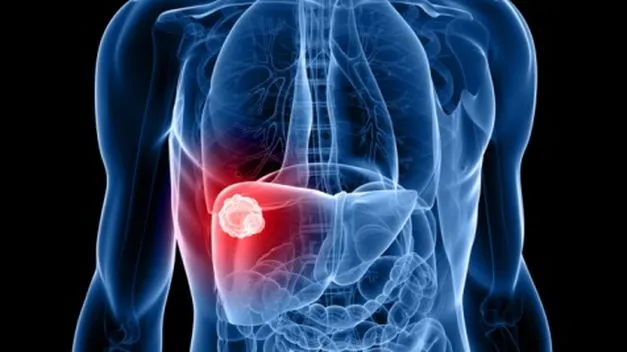People with diabetes have a 2.61 times greater risk of developing the tumor.And in addition, this risk increases proportionally with weight gain.
Today it is known that excess weight is associated with a greater risk of suffering from different types of cancer.In fact, the World Health Organization (WHO) has recently published a report in which it relates obesity to up to eight oncological diseases.It is the case, among others, of liver cancer.
But a new study carried out by researchers from the American Cancer Society (ACS) goes further.And according to the results, published in the "Cancer Research" magazine, excess weight, either valued from the body mass index (BMI) or the perimeter of the waist, increases, and much, the riskof liver cancer.
A risk, in addition, that is even greater in cases where obesity is accompanied by diabetes.An aspect to take into account since, by itself, type 2 diabetes already increases up to 2.61 times the probability of appearing a tumor in the liver.
As Peter Campbell, director of the research, explains, “our results are an additional reason to maintain a‘ normal ’weight.In addition, some results that are consistent with other findings that indicate that obesity and diabetes could be playing a role in the rapid increase in the incidence of liver cancer in the last decade.And it is that liver cancer is not associated solely with alcohol consumption and viral hepatitis infections ».
not only alcohol and hepatitis
The incidence of liver cancer has tripled in the United States in the last four decades.A period in which, also, cases of obesity and type 2 diabetes have shot.So, can there be a relationship between, on the one hand, liver tumors and, on the other, obesity and diabetes?
Well, to evaluate this possibility, the authors reviewed the data of 14 great prospective studies carried out with 1.57 million adults who, without diagnosis of liver cancer at the time of recruitment, had answered different questionnaires to know their weight, height, alcohol consumption, smoking and other risk factors of liver cancer.
The results showed that each increase of 5 kg/m2 in the BMI was associated with a very significant increase in the risk of liver cancer development - of 25% in the case of women and up to 38% in that of themen
Likewise, and regardless of the sex of the participant, the 5 cm increase in the perimeter of the waist entailed an increase in the probability of 8%tumor appearance.
Liver cancer is not associated solely with alcohol consumption and viral hepatitis infectionspeter Campbell
And what is more important, regardless of alcohol consumption, smoking and BMI habit, participants with type 2 diabetes had a risk up to 2.61 times greater than suffering from a tumor in the liver.More;This risk, already very considerable, increased in parallel with the BMI.
As Peter Campbell indicates, «in our study we observe that each of these three factors was associated consistently with the risk of liver cancer.Three factors that, let's not forget, are directly related to metabolic dysfunctions.Consequently, our findings reinforce the evidence that liver cancer must be on the list of tumors associated with obesity.
Objective: to combat obesity
In short, the increase in the prevalence of obesity and one of its main associated diseases - type 2 diabetes - explains, at least partially, the remarkable increase inCases of liver cancer both in the United States and around the world.
As the research director refers, “the risk of developing liver cancer throughout life is established around 1% in the United States.Thus, 8 out of 100,000 adults end up suffering the tumor every year.And as our results show, the risk of appearance of this type of cancer is more than double in the population with type 2 diabetes ».
Therefore, and in order to combat the growing incidence of liver cancer, authors affect the need to devote more efforts to fight against obesity.
As Katherine A. McGlynn, co-author of research, concludes, «from a public health perspective, our results are very important because, unfortunately, obesity and diabetes are very common in the population.And while there are other very well established risk factors for the tumor, in the case of hepatitis B and C viruses, they are much less common factors than obesity or diabetes ».


